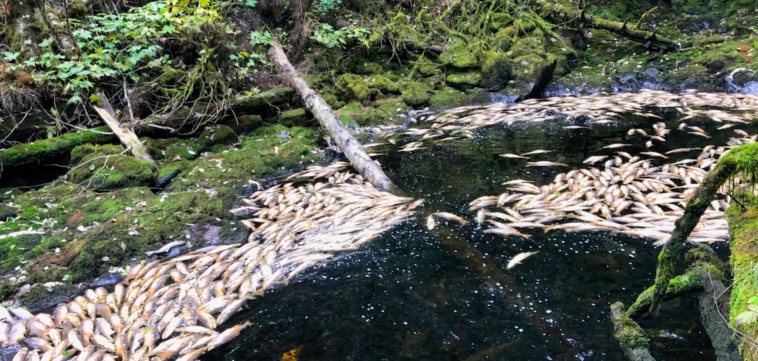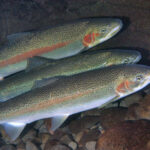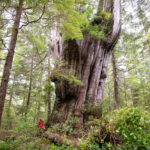
A record year for wildfires in BC is being matched by an unprecedented year of drought.
That’s one conclusion from a recent BC government report, which revealed that more than 80% of BC’s river systems are facing high to extreme drought conditions this year. Experts are now worried about the impact this will have on fish.
“I’m definitely concerned about the sustainability of wild salmon populations in certain areas of BC,” University of British Columbia zoology professor Eric Taylor tells West Coast Now.
Currently, 28 of 34 water basins across the province are ranked in either the most severe or second-most severe classifications of drought. The South and North Thompson River regions are facing the most extreme conditions.
The severity of the drought is a result of the past 14 months of below-average rainfall, a phenomenon increasingly challenging the province’s ecosystems.
The BC government’s drought portal released the alarming statistics, coinciding with multiple regions of the province being hit by deepening drought conditions. The drought portal “uses multiple embedded maps to provide information on provincial drought levels, historical drought time-lapse information, and other drought information.”
Dry Conditions Endanger Fish
“If the water is too low, they might not be able to access areas that they normally would spawn in or travel through. Of course, if they get there, then the water temperature is very, very high. That can cause direct mortality, it [also] makes them more vulnerable to predators.”
Eric Taylor, University of British Columbia zoology professor
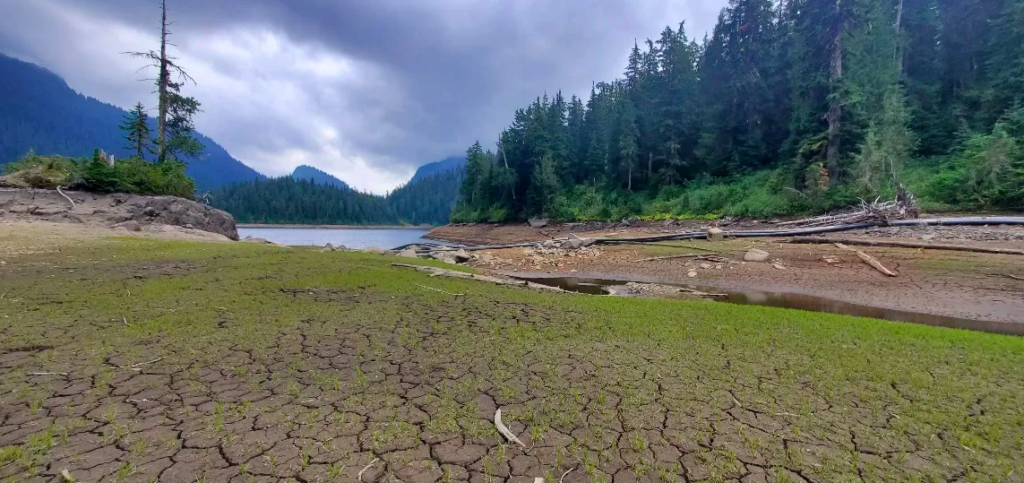
Taylor is particularly concerned about the drought’s impact on salmon returning to spawn this month. “If the water is too low, they might not be able to access areas they normally would spawn in or travel through. Of course, if they get there, then the water temperature is very, very high. That can cause direct mortality. It [also] makes them more vulnerable to predators,” he explains.
He says “stranding” is another big problem for fish, “where the water level goes down and the connection between two pools or a side channel at one time connected to the main river is now cut off.”
West Coast Now recently reported that salmon fry in Chilliwack’s Ford Creek were stranded in hot water due to recent tree removal. Community members had to come in to rescue what remained of the surviving population.
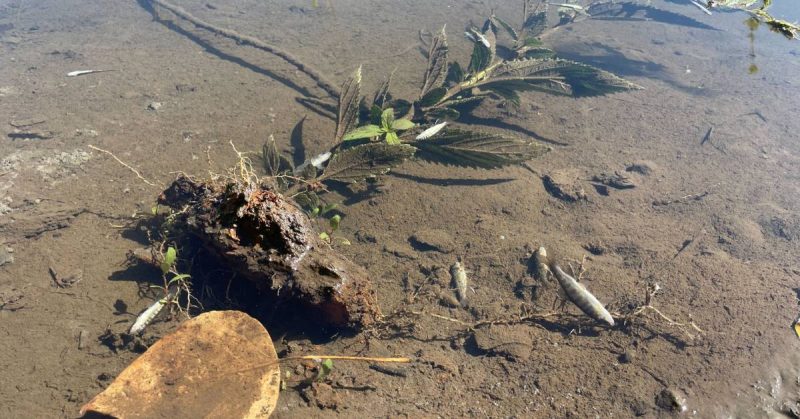
Minimum flows, minimize risk
Taylor says he’s keeping a close eye on the “minimum flows” – the minimum levels of water required for fish to migrate and reproduce successfully.
“Making sure those are enforced where possible is obviously very important. We may have to trade off water use or some things like agriculture or residential use to keep flows at a minimum level so that fish can have a chance to survive,” he explains.
He recommends checking the BC drought portal if you are out on rivers and creeks recreationally this summer to prevent putting additional pressure on fish, saying, “If the water is getting too warm and too low, you’re putting extra stress on any fish you do catch.” While not recommending everyone stop recreational fishing, he encourages everyone to “at least go through the thought process of thinking about it.”
Anywhere listed at level 5 on the drought portal, he says, “You really shouldn’t be doing anything in or around the creek.”
“As severe as drought can be, it’s because of the other changes to the environment and loss of habitat [that] we’ve compromised the ability of these fish to respond to things like drought.”
Eric Taylor, University of British Columbia zoology professor
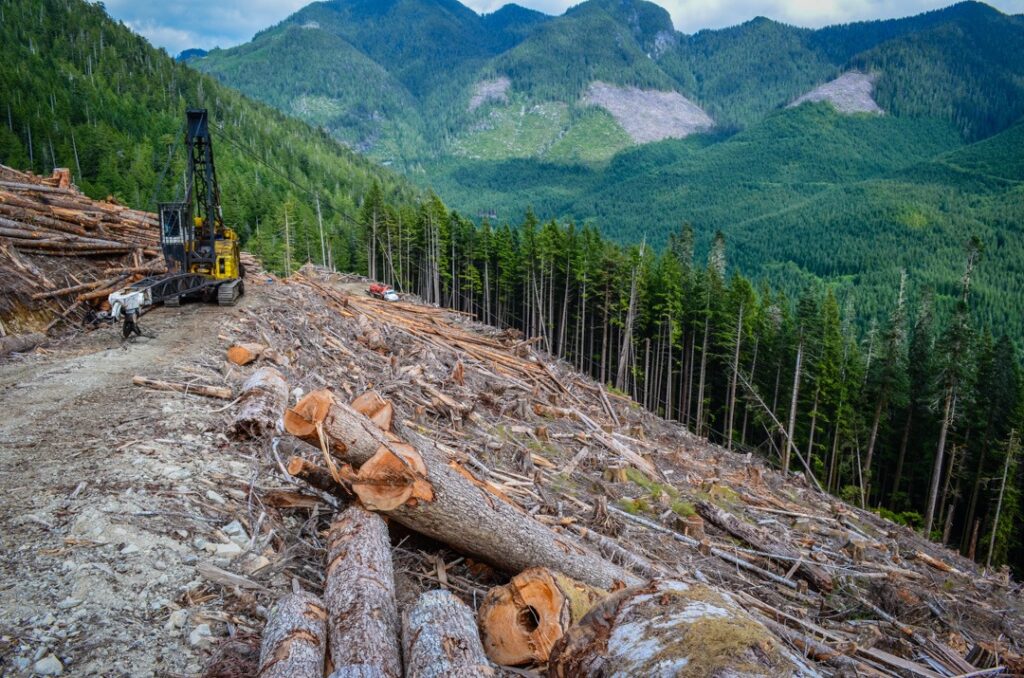
Taylor also reminds us that human-caused environmental impacts, like industrial-scale logging and mining, have weakened the fish population’s resiliency.
“As severe as drought can be,” he tells us, “it’s because of the other changes to the environment and loss of habitat [that] we’ve compromised the ability of these fish to respond to things like drought.”
Droughts & Wildfires
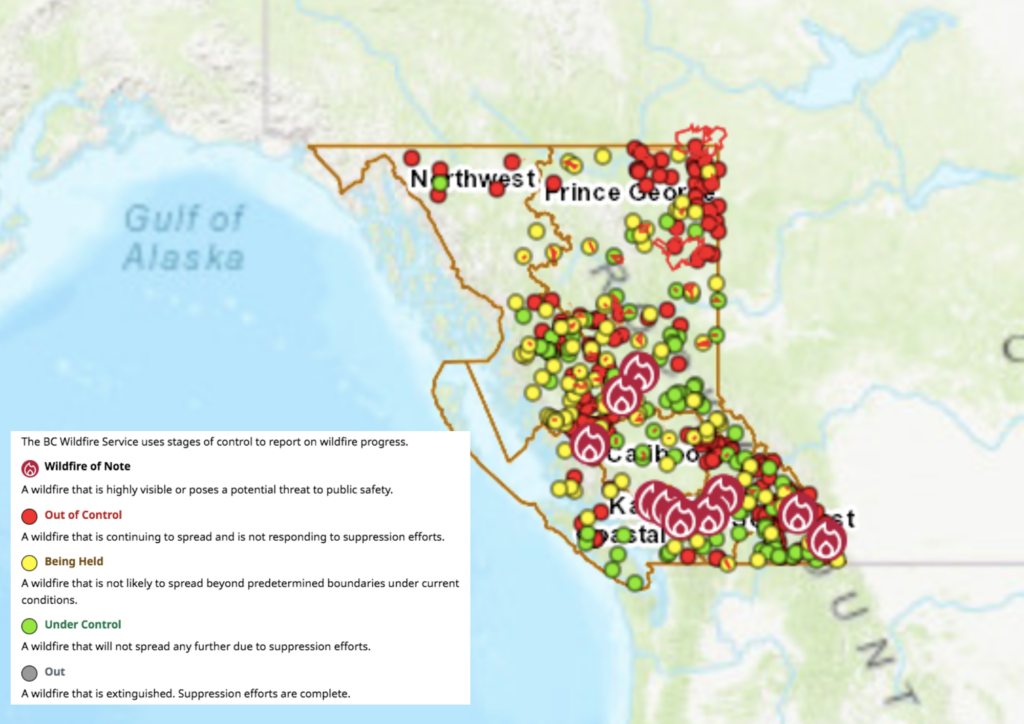
“We need people to be calm, we need people to care about this, and we need people to conserve.”
Bowinn Ma, Minister of Emergency Management and Climate Readiness
Dry conditions are, in turn, exacerbating the already dire wildfire situation in the province. BC continues to face an unprecedented number of wildfires – currently, the count is above 400.
The toll that the combination of the forest fires and drought will take on wildlife and the larger ecosystem remains to be seen.
In a press conference last month declaring the province-wide drought, Bowinn Ma, the Minister of Emergency Management and Climate Readiness, said, “We need people to be calm, we need people to care about this, and we need people to conserve.”
To learn more about the drought conditions in your area, check out the BC drought portal.




